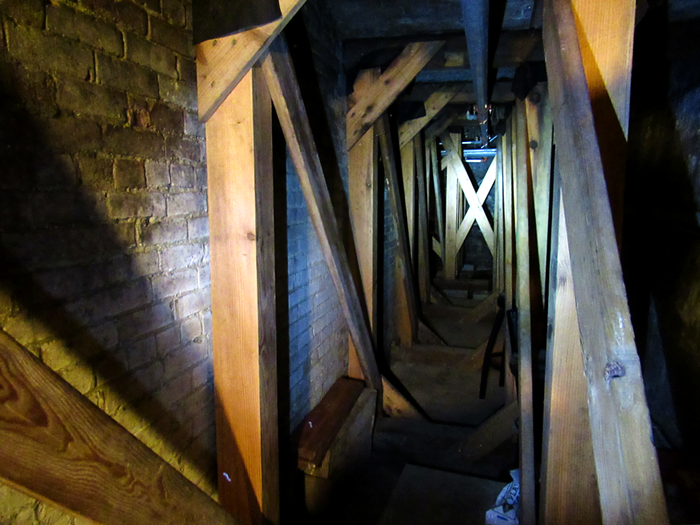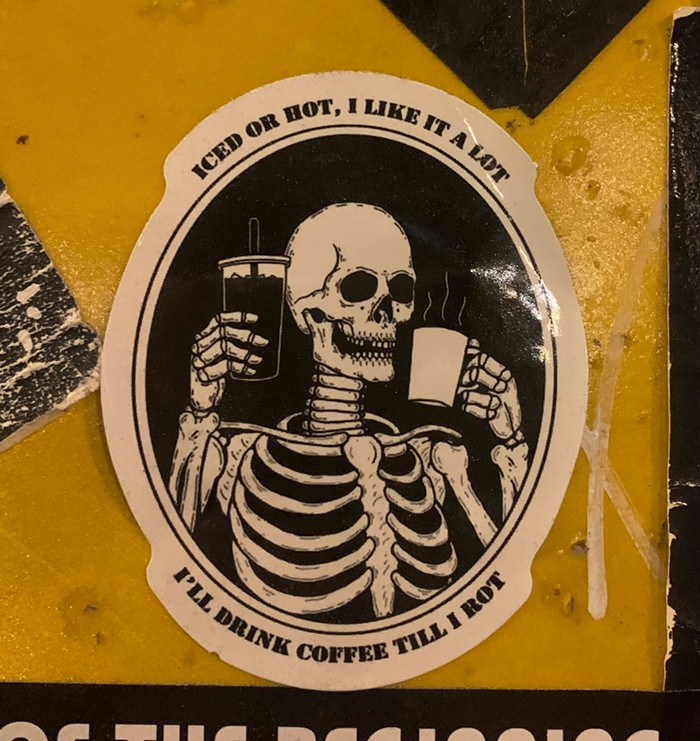What the Hell Is Make Believe Seattle?
Finally, a Film Festival for Fellow Weirdos
The Power of Making People of Color Invisible
Stephanie Syjuco Empowers the Oppressed with Just a Finger
Better, Stronger, Faster
The Seattle Repertory Jazz Orchestra Pays Tribute to the Legendary Oliver Nelson
Where to Pickup a Copy of The Stranger's Spring A+P 2024
Find it at Hundreds of Locations Around Seattle!
Queen of Our World
When Sasha taqwšəblu LaPointe Writes, the Revolution’s Coming
Blowing Minds and Melting Faces
Thunderpussy Celebrate Their Survival with a Surprising Benaroya Hall Takeover
Person of Interest: Arson Nicki
Finally, a Fashion Expert for the People
Six Films You Need to See at Make Believe Seattle
Starring Ethical Vampires, Ridiculous Puppets, and a Dude Who Pretends to Be George Lucas for Funsies
Art, Illness, and Auto Repair
Cherdonna Makes a Compassionate Comeback
Person of Interest: TeZATalks
Harbinger of Horror-Filled Hardcore Pop
It’s Important That the Bug Undulates
How Anida Yoeu Ali Uses Wiggling Worms and Glitter as Forms of Protest
Sincerely Joking
Chastity Belt Live, Laugh, and Love 10 Years On
Your Spring Arts Itinerary
24 of This Season’s Very Best Art, Books, Music, Film, Theater, and Food Events
Tessa Hulls’s Feeding Ghosts Is Instant Canon Fodder
Too Bad She’ll Never Write Another Graphic Novel
Isabel Hagen’s Comedy Strings You Along
How a Juilliard-Trained Violist Found Harmony as a Stand-Up Comedian
Person of Interest: Taha Ebrahimi
Seattle’s Coolest Street Tree Expert
It was kind of by accident that Taha Ebrahimi wrote a book. Especially an illustrated one about trees.
“This is a kismet, happenstance COVID project,” she told me. “Basically, during COVID, I had all this extra time, and I was always interested in trees, but I don’t have any background in illustration or horticulture. I always thought people who knew stuff about plants and trees, those were the people who had authority. I don’t know why! Those Latin names, they just give you this impostorism.”
She started taking walks to get out of the house during lockdown, and it was on those walks that a deeper love for trees began to, ahem, blossom. She picked up a copy of The Sibley Guide to Trees, which is mostly pictures, and Arthur Jacobson’s Trees of Seattle, which has tons of data and specific locations of specific species but is mostly text, and she slowly began to piece together her own map of notable specimens while wandering from neighborhood to neighborhood.
The result is Street Trees of Seattle: An Illustrated Walking Guide, a charming book full of hand-drawn maps, detailed sketches of leaf and petal shapes and bark patterns, and tons of very nerdy, very fascinating history about how certain species of trees got to Seattle in the first place.
For instance, the giant sequoia at Fourth Avenue and Stewart Street, the one a man climbed and lived in for 24 hours in 2016? It was “originally on Aurora,” says Ebrahimi. Or, have you ever wondered why there’s so much holly in Beacon Hill? In the book, Ebrahimi explains, “...the story of holly in Seattle truly begins in 1927, when Lillian McEwan (wife of the owner of Ballard’s Seattle Cedar Lumber Manufacturing Company) founded the Washington State Society for the Conservation of Wild Flowers and Tree Planting and began her inexplicable personal mission to plant so much English holly that Washington could one day become ‘the Holly State.’”
Today, Ebrahimi adds, “The King County Noxious Weed Board classifies holly as a ‘weed of concern.’” Thanks for nothing, McEwan!
On a chilly February afternoon, when it was too cold to go tree spotting, I hopped on a call with Ebrahimi to learn more about her favorite Seattle trees and, of course, to inquire about a few secret spots to see those dopamine-triggering cherry blossoms.
You mention in the book that the average lifespan for a street tree is something like 13 years. I didn’t realize it was so short! Do you know, is it because that dataset includes trees that were maybe moved or cut down to make room for development?
People would be very surprised to know that many new trees that we plant don’t make it to maturity. There are always tree-planting events, then people will forget about the tree. It’s a grand idea to say we’re going to plant trees, but the resources have to go into also taking care of them. A mature tree provides 10 times the human health benefits as small trees. They’re still trying to do a lot of research to find out how these health benefits tend to come to us, but I felt it on my walks. Just being outside in nature, doing nothing else but walking, and having a destination, it forced my brain to process things in a different way and to go slower. I was born and raised in Seattle, but I found myself seeing the city in this completely different way.
Since you grew up here, you know, then, about all of the hikes and mountains that are just outside of the city—or even wooded areas in the city, like Discovery Park—and we’re encouraged to go enjoy those places, but what people don’t realize is that nature is also right there, right outside your door.
One hundred percent. When I started doing this project, it was largely out of wanting to share this experience with those who might have been in the same situation as I was. I didn’t have a car, and Seattle isn’t a great city to get around if you don’t have a car, and it was during COVID. I wanted to see some trees, and the only ones that were available were the ones that were right outside my door, which more people have access to. Although we do know that there are fewer street trees in areas of low income, more people do have access to the street trees, and it’s this overlooked forest that is literally right there. You forget that they’re there, but they’re doing us good.

Was there one tree that kind of sparked this love affair with trees, or was it just the experience overall?
I think it was the experience overall, but there have been a couple of really cool trees that stick out in my memory. One is the giant sequoia on Capitol Hill. It’s near Volunteer Park. It’s this massive tree and it’s leaning a little bit like the Tower of Pisa, and it is just so grand and majestic. And there’s this really cool—it’s the second-widest-diameter pine in Seattle, I believe. It’s up in Wedgwood, and it blocks somebody’s stairway, their entryway to their door. And they haven’t cut it down. I ran into the owners when I was looking at it and they told me that the previous homeowners remembered having like a Tarzan swing or something that they hung on the branch so that they could swoop down to the sidewalk from their home. I love that no one cut that tree.
Do you have any secret tips for people who want to enjoy the spring flowers but in a less obvious place than, say, the University of Washington? People climb on the cherry blossom trees at the UW for Instagram! How do you stay out of that mess while still getting out there and loving some of the spring trees?
Street trees are really the secret spot where you can go visit these beautiful cherry blossom trees without those massive crowds. There’s actually two streets I would recommend in Seattle—there are so many! To narrow it down is really difficult, but 33rd Avenue Northwest in Ballard, kind of above Northwest 75th Street, that street is lined with beautiful Yoshino cherries that bloom at the same time as the UW cherries. Kind of late March, early April-ish. Also, around the same time—these are also a variation of the Yoshino cherry—on Capitol Hill at 21st Avenue East, above East Aloha Street. That is a little-known secret. [Laughs] Maybe not so much anymore.
Taha Ebrahimi will read from Street Trees of Seattle at Elliott Bay Book Company Wednesday, April 17, at 7 pm, free, all ages.




















